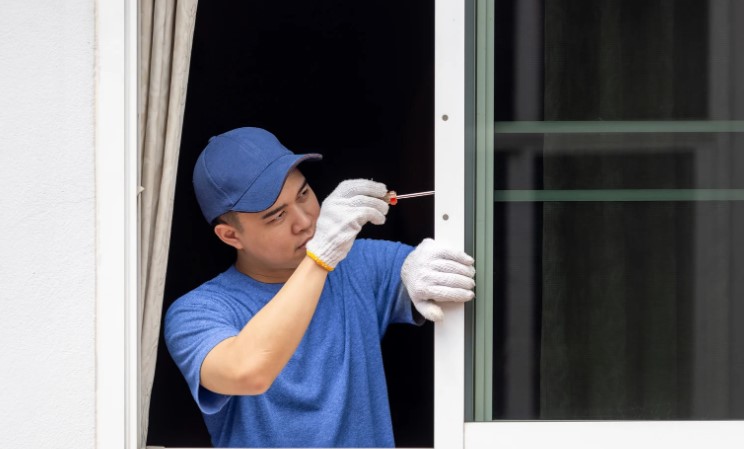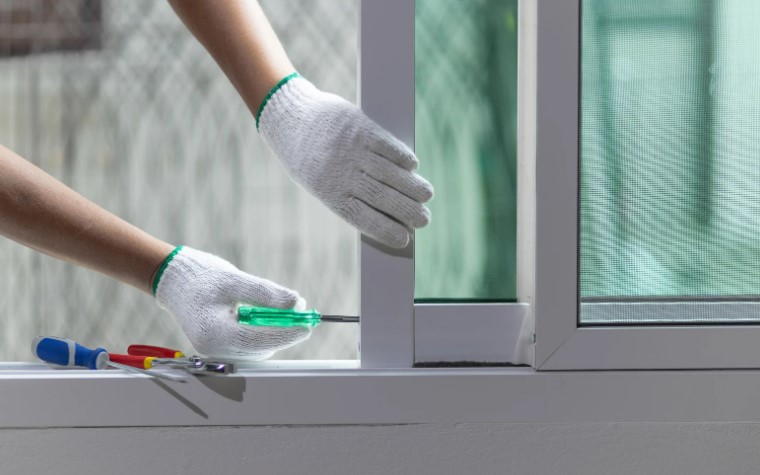- Why Do I Need to Fully Open a uPVC Window for Cleaning?
- How to Fully Open uPVC Window for Cleaning from Inside?
- How to Open a uPVC Window to Clean the Outside?
- How to Release a Window for Cleaning?
- How to Open a Stuck Window in uPVC?
- How to Clean Very Dirty uPVC Window Frames?
- How Do You Clean Windows That Don't Open All the Way?
- Safety Precautions When Opening uPVC Windows
- Cleaning the Exposed Window Frames and Channels
- Top Maintenance Tips for Your uPVC Windows
- Comparison Table: uPVC Window Types & Cleaning Access
- Conclusion
Cleaning windows may seem like a straightforward task—until you’re faced with a uPVC window that only tilts or opens slightly.
I found myself in that exact situation and quickly realised that to clean my windows properly, I needed to fully open them from the inside.
Whether you’re tackling spring cleaning or just want clearer views, knowing how to fully open uPVC window for cleaning is key to getting the job done right.
Let me walk you through everything I’ve learned, step by step.
Why Do I Need to Fully Open a uPVC Window for Cleaning?
Over time, grime, dust, and moisture collect in areas that aren’t visible or easy to reach. That includes the outer glass surface, hinges, and the window channels where insects, cobwebs, and dirt often hide.
If I only cleaned the interior, I’d be leaving behind a buildup that eventually affects how smoothly my window operates.
Fully opening the window allows me to clean more effectively and spot early signs of wear or damage.
How to Fully Open uPVC Window for Cleaning from Inside?
The good news is that most uPVC windows are designed with cleaning access in mind, especially in modern homes.
If you have a tilt and turn window, you can open it fully by turning the handle horizontally. This disengages the tilt mechanism and swings the window inward like a door.
For casement windows, the method is slightly different. You usually have to unlock the window, open it outward, and locate a restrictor arm—a small device that limits how far the window opens.
By pressing or lifting its catch, I’m able to open the window wider, giving full access to both sides of the glass.
The process is straightforward once you understand your window type, which is a critical step before starting any cleaning.

How to Open a uPVC Window to Clean the Outside?
Cleaning the exterior of a window from indoors can be tricky without full access. Fortunately, tilt and turn models make this part easy by swinging completely inward.
For casement windows, I carefully disengage the restrictor to open the sash wider. If I have a sash window, I check for a tilt release mechanism at the top corners of the inner sash, allowing it to pivot inward slightly.
The key here is being gentle and making sure all parts of the mechanism are functioning as intended. If I notice any resistance, I stop and check for blockages or call in a professional rather than forcing anything.
How to Release a Window for Cleaning?
Many windows in newer UK homes come fitted with child safety locks or restrictors to prevent full opening. These safety features are great—but they can get in the way when you need to clean.
To release them, I locate the small latch or tab, usually near the hinge or frame. Gently pressing or sliding it while pulling the sash allows the window to open further.
On sash windows, some models include hidden buttons that tilt the sash inward. It’s not always obvious at first glance, so a close inspection or check of the user manual helps here.
If I can’t find the release mechanism, I make sure not to force the frame. It’s better to stay cautious and avoid damaging the window.
How to Open a Stuck Window in uPVC?
A stuck window can be frustrating, especially when you’re ready to clean. I usually start by examining the frame for dirt or dried paint that may be sealing it shut.
Then I check the handle, making sure it’s in the correct position to unlock the sash. Sometimes, applying a little silicone-based lubricant to the hinges or handle mechanism does the trick.
If it still doesn’t budge, I gently try to ease it open using both hands for even pressure. I never force it—forcing a uPVC frame could damage the mechanism permanently. In stubborn cases, I call a professional to inspect it.

How to Clean Very Dirty uPVC Window Frames?
Over time, uPVC window frames can pick up a lot of grime, especially near the hinges and drainage slots. To clean mine, I mix warm soapy water with a mild detergent and use a soft cloth or sponge.
For corners and tight spots, an old toothbrush works well. When faced with stubborn stains, I’ve had success using white vinegar diluted with water.
Once I’ve scrubbed the dirt away, I always dry the frame with a clean cloth to avoid water stains. I stay away from harsh chemicals like bleach or scouring pads, as they can damage or discolour the frame.
How Do You Clean Windows That Don’t Open All the Way?
If a window doesn’t open fully—or at all—I have to get creative. For these situations, I use a long-handled window cleaner or squeegee.
Magnetic glass cleaners designed for double-glazed windows are also helpful, though they take a bit of practice to master.
For high or hard-to-reach windows, especially on upper floors, I either use a telescopic cleaning pole from the garden or hire a professional window cleaner. It’s just not worth the risk trying to reach them myself.
Safety Precautions When Opening uPVC Windows
Before doing any window work, especially cleaning, I always take a moment to consider safety. I make sure the floor area is dry and free of clutter, and if I’m reaching higher areas, I use a proper step ladder.
It’s important to never lean out of a window, especially on higher floors. I also inspect the hinges and handles to ensure they’re not loose or damaged before opening the window wide.
Taking these steps keeps the cleaning process efficient and safe.

Cleaning the Exposed Window Frames and Channels
Once I’ve fully opened the window, I get to work on the exposed frames and inner channels. These areas collect surprising amounts of dust and dead insects.
First, I use a soft brush or a small handheld vacuum to clear the debris. Then, I wipe everything down with a damp cloth.
Hinges and locks get special attention. A drop of silicone lubricant keeps them moving smoothly and prevents rust.
I also inspect the drainage holes to make sure they’re not blocked, as that could lead to damp issues inside the frame.
Top Maintenance Tips for Your uPVC Windows
Taking good care of my windows ensures they’ll stay in great shape for years.
I’ve made it a habit to clean the frames at least once a month and check the handles and hinges every few months. Applying a bit of silicone spray twice a year keeps things moving smoothly.
I also look for signs of wear like cracked seals, drafty frames, or discolouration. Small issues can often be fixed at home, but when in doubt, I ask for a second opinion from a local installer or repair specialist.
Comparison Table: uPVC Window Types & Cleaning Access
| uPVC Window Type | Fully Openable | Easy Exterior Cleaning | Notes |
| Tilt and Turn | Yes | Yes | Opens inward; ideal for cleaning |
| Casement | Yes | Moderate | May need to release restrictor |
| Sliding Sash | Partially | Moderate | Tilt-in feature on some models |
| Fixed Pane | No | No | Requires external cleaning equipment |
Conclusion
Learning how to fully open uPVC window for cleaning has made my life much easier. Not only does it improve the way my windows look, but it also helps them function better.
Understanding the type of window you have, knowing how to safely release restrictors, and using the right cleaning methods can make a big difference in both results and safety.
With regular maintenance and care, your uPVC windows can remain as good as new for years to come. And trust me, the difference a clean, fully-accessed window makes to your home’s brightness is worth every bit of effort.


0 Comments